As the first Christian country worldwide, Armenia is known for it’s beautiful, historic churches. Not only are they tourist attractions, they also serve as community centers for baptisms, weddings, barbecues, class trips and more.
When Pure Earth, working together with the American University of Armenia in 2013, found lead levels at the Apostolic church and monastery in Akhtala to be the highest not only in the country, but possibly the world, we knew it was a problem.
The lead contamination has roots in the site’s history as a fortress in the 10th century, where metal works and weapon making took place on the grounds. Later, mining in the region deposited more polluted waste.
 Toxic site investigators being trained to identify and assess toxic sites in Armenia.
Toxic site investigators being trained to identify and assess toxic sites in Armenia.
Lead is a neurotoxin that is particularly dangerous to children, whose bodies are growing and brains are developing. Exposure to lead can cause developmental delays, mental retardation, decreased bone and muscle growth, and damage to the nervous system, kidneys and hearing. It essentially robs children of their ability to develop to their fullest potential. Blood lead testing showed that 84% of tested children in Akhtala had unsafe levels of lead in their blood.
 A child being tested.
A child being tested.
Pure Earth knew raising funds to address this critical health crisis was a priority.
We learned of the Armenian diaspora’s commitment to helping Armenia grow and prosper and met Diana Mkhitarian, who joined the Pure Earth Board in 2015 and immediately set her sites on achieving this goal.
Mkhitarian introduced Pure Earth to Lisa Stepanian, who was the Executive Director of Armenia Fund USA Eastern Affiliate, and secured approval from their Board to raise funds to remediate the toxic lead from the Akhtala monastery.
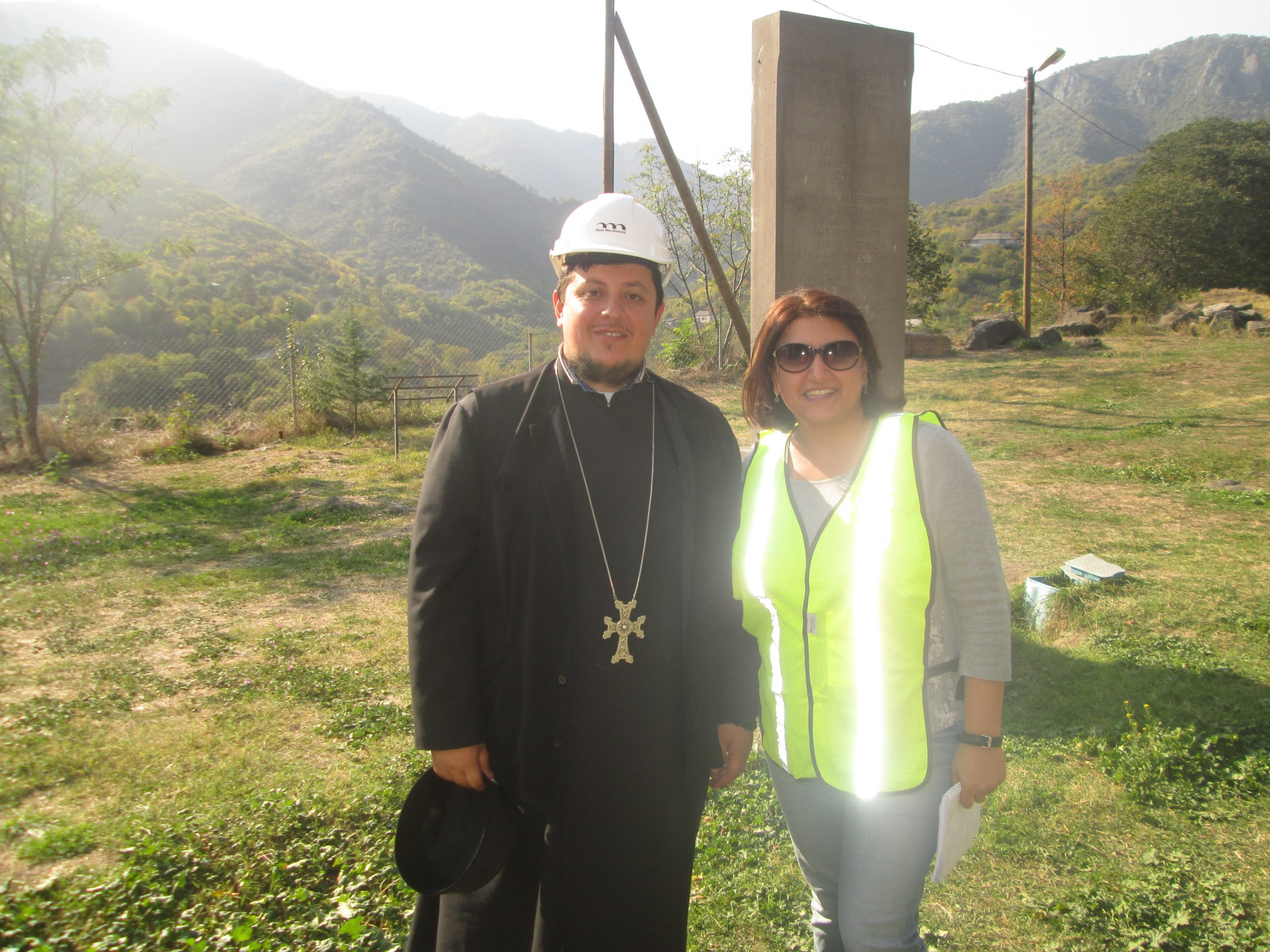 Father Hetum Tarverdyan with Pure Earth Armenia coordinator Lusine Taslakyan.
Father Hetum Tarverdyan with Pure Earth Armenia coordinator Lusine Taslakyan.
The funds were raised, Lusine Taslakyan was hired as country coordinator, and an Armenian Pure Earth NGO was established. After securing many approvals from the church and Ministry of Culture, the work began in October of 2018.
The chosen remediation method involved covering the contaminated soil with a layer of geotextile, which serves as both a barrier to contain the lead contaminated soil and a marker to show future generations where not to dig or plant.
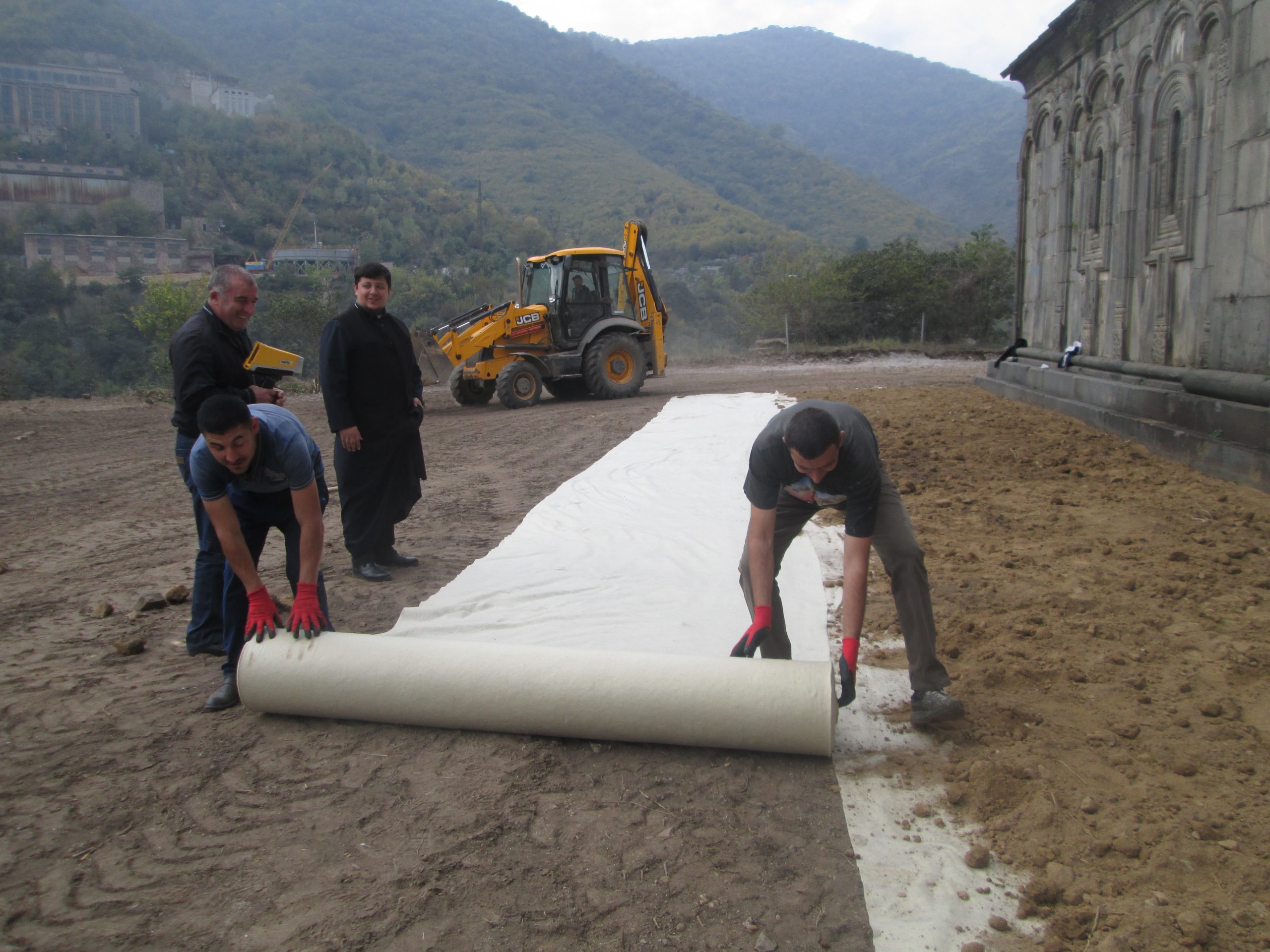 Workers laying down the geotextile barrier in front of the church.
Workers laying down the geotextile barrier in front of the church.
The geotextile is covered with clean soil to a thickness appropriate for planting trees, grass and keeping everything covered and in place. The mayor of Akhtala helped Pure Earth locate enough clean soil to make the job possible.
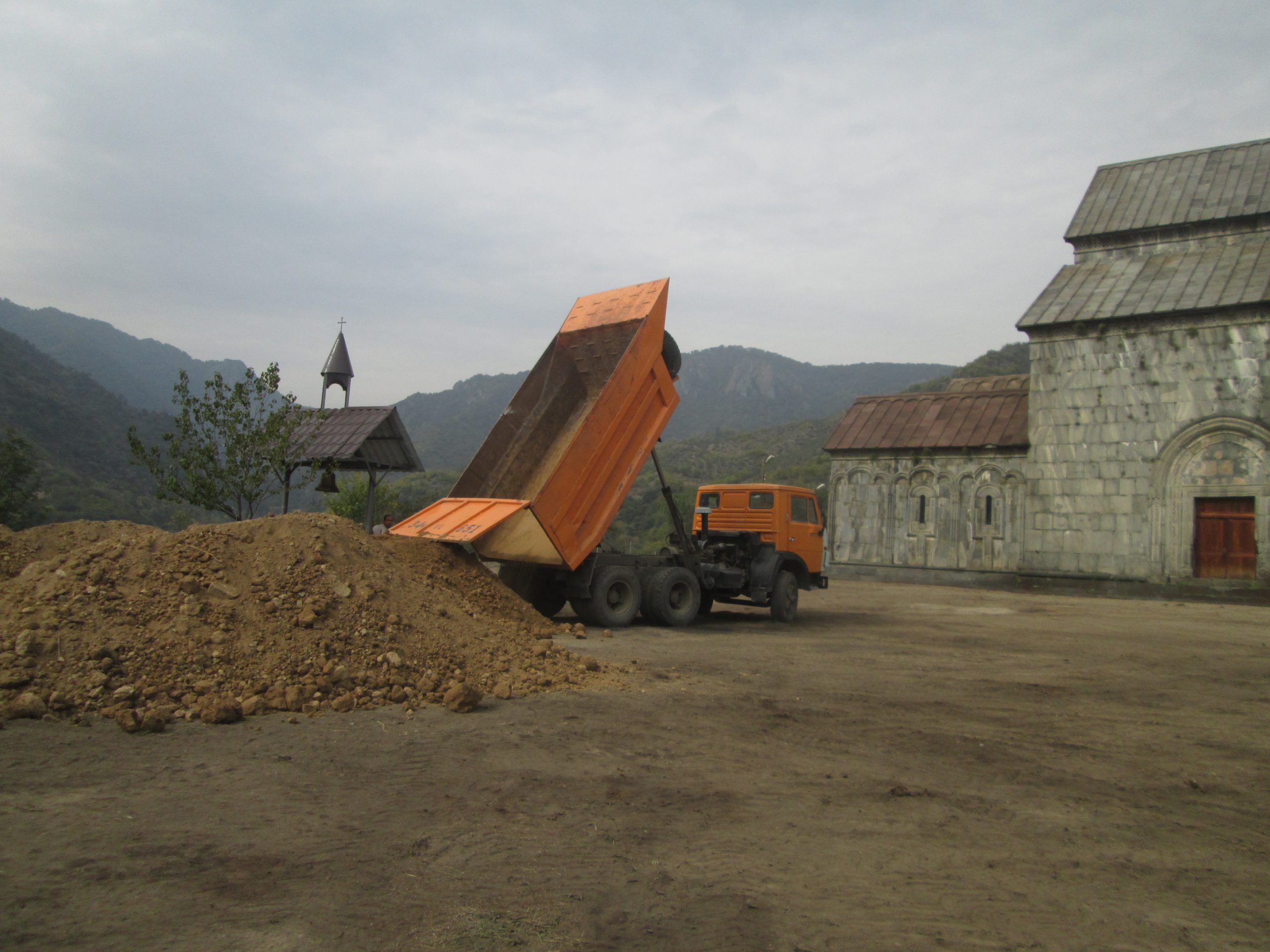 A truck unloading clean soil.
A truck unloading clean soil.
An Armenian contractor named Vardan was hired to do the work, which took about 2 months. The project was overseen throughout by Lusine and two Pure Earth TAB (Technical Advisory Board) members, Barbara Jones and Robert Kurkjian, who have expertise in toxic pollution projects and remediation.
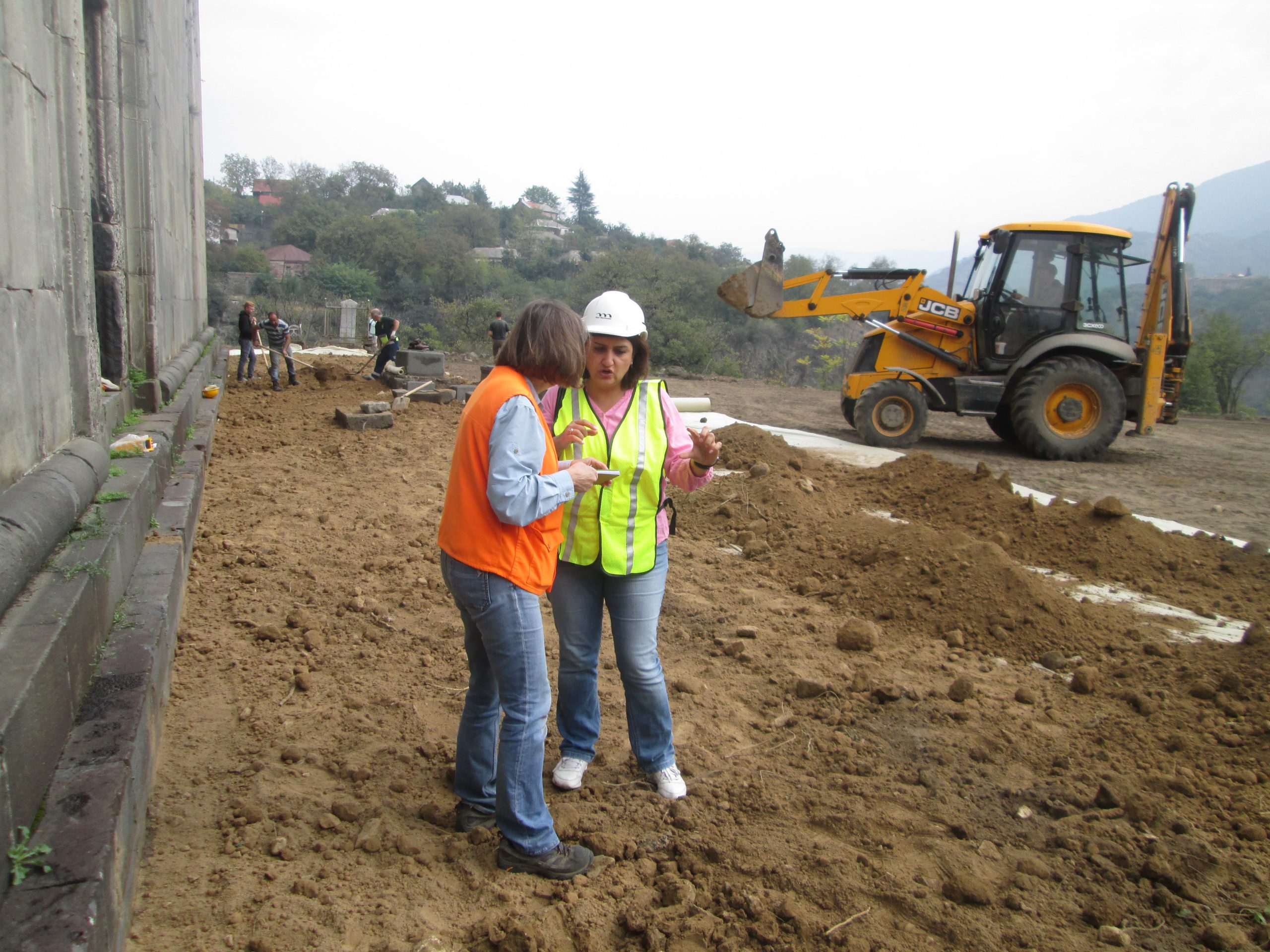 Lusine Taslakyan (right), Pure Earth’s country coordinator in Armenia, discusses the work onsite with Barbara Jones, Pure Earth’s TAB (Technical Advisory Board) member helping with the cleanup.
Lusine Taslakyan (right), Pure Earth’s country coordinator in Armenia, discusses the work onsite with Barbara Jones, Pure Earth’s TAB (Technical Advisory Board) member helping with the cleanup.
The work was completed in December and included a new stone pathway wide enough to fit a bride and groom walking side by side!

It also included an irrigation system to ensure that the newly planted trees, and grass to be planted in the spring, will grow properly.
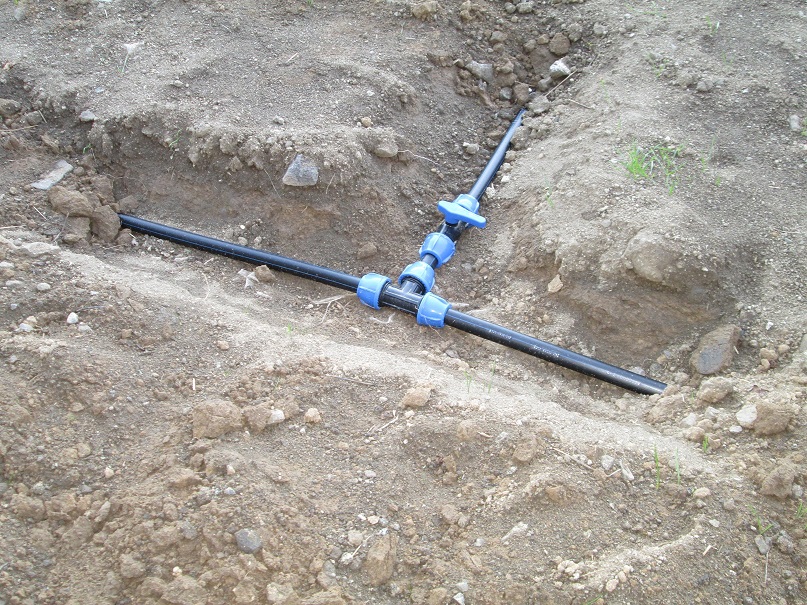 Part of the irrigation system.
Part of the irrigation system.
As the first lead site to be remediated in Armenia, the project even made the news when A1plus TV channel/ArmNews interviewed Pure Earth Board member Diana Mkhitarian and country coordinator Lusine Taslayyan about Pure Earth’s work in Akhtala.
 Pure Earth Board member Diana Mkhitarian being interviewed by Armenian news about the cleanup.
Pure Earth Board member Diana Mkhitarian being interviewed by Armenian news about the cleanup.
Watch the report below:
The Akhtala remediation is intended to serve as a pilot project showing that polluted sites can be cleaned up in a cost efficient, effective manner. Armenia Fund USA Eastern Affiliate’s generous support made protecting the children of Armenia from exposure to toxic pollution a reality.
 Petr Sharov (far right), Pure Earth’s regional director for Eastern Europe and Central Asia, explaining the site assessment process to a group of new toxic sites investigators.
Petr Sharov (far right), Pure Earth’s regional director for Eastern Europe and Central Asia, explaining the site assessment process to a group of new toxic sites investigators.
Pure Earth is continuing work in Armenia, with additional funds granted by USAID, to assess new toxic sites and identify the next priority for cleanup.
We have hired and trained a team of investigators, who will be assessing dumpsites and legacy industrial sites over the next six to eight months as part of our TSIP (Toxic Site Identification Program). They will be in the field using equipment such as an XRF (X-ray fluorescence) analyzer to test for lead, arsenic, mercury and other toxic metals.
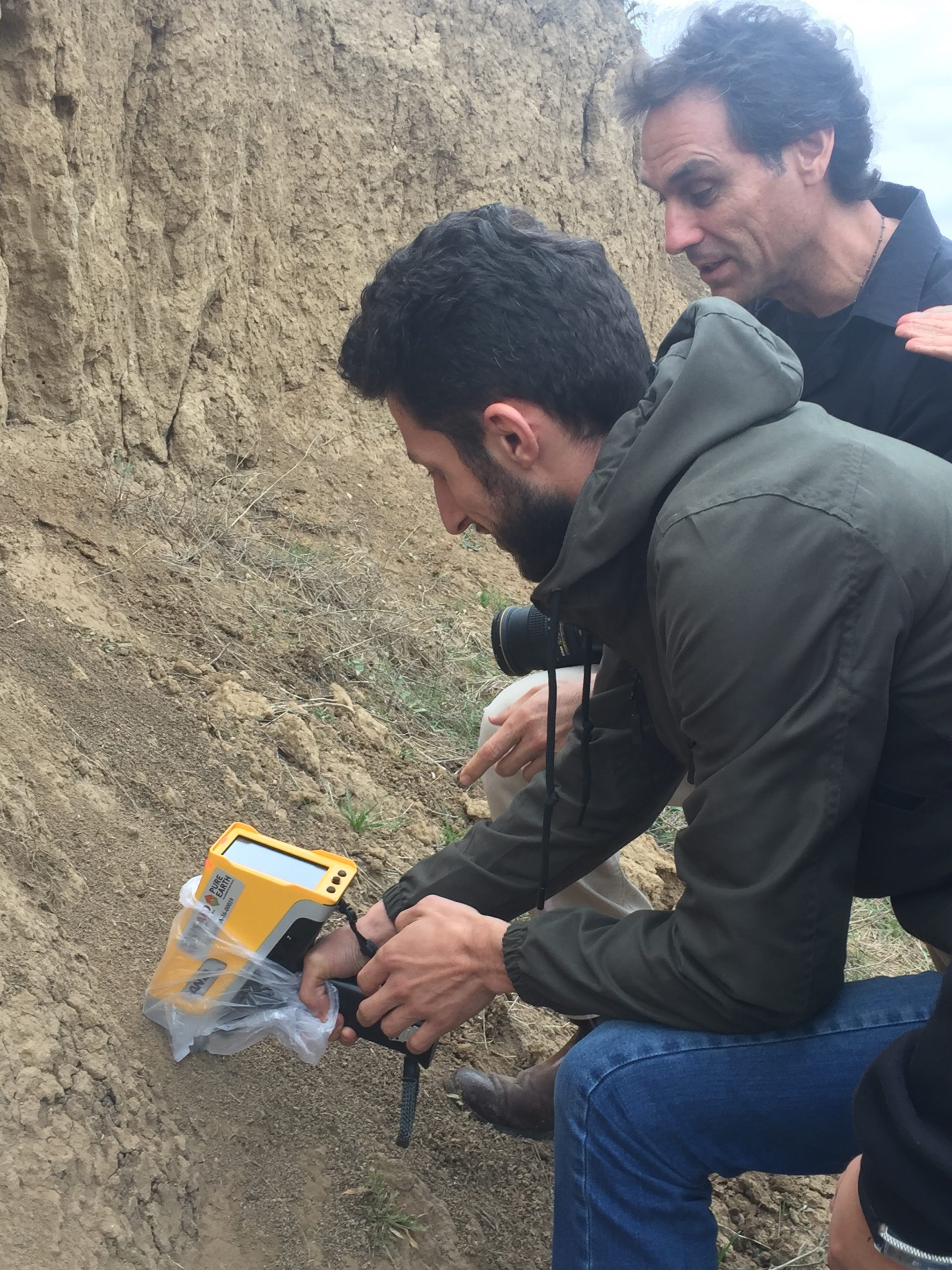 Robert Kurkjian, Pure Earth TAB (Technical Advisory Board) member, looks on as an investigator tests the soil with an XRF (X-ray fluorescence) analyzer that can identify toxic particles in soil in about 30 seconds.
Robert Kurkjian, Pure Earth TAB (Technical Advisory Board) member, looks on as an investigator tests the soil with an XRF (X-ray fluorescence) analyzer that can identify toxic particles in soil in about 30 seconds.
This information will be entered into Pure Earth’s database of toxic sites, which ranks sites not only according to level of contaminant, but also according to potential affect on community health.
By fall of 2019, Pure Earth hopes to have the next project site chosen in Armenia and to contiue building capacity and sharing knowledge of the soultions to existing pollution issues with government and key Armenian leaders.

Learn more:





